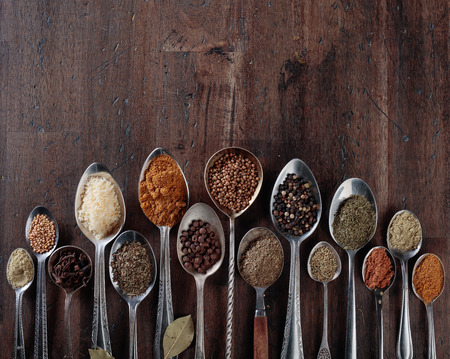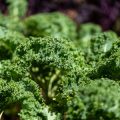Introduction to British Superfoods
The term “superfood” has become something of a buzzword in recent years, but what does it truly mean, especially within a distinctly British context? While the global conversation often centres around exotic berries or seeds from far-flung regions, there is a growing appreciation for the nutrient-dense, health-promoting foods found right here in the UK. In essence, superfoods are ingredients naturally rich in vitamins, minerals, antioxidants, and other beneficial compounds that can contribute to overall wellbeing. When considering British superfoods, we’re talking about produce that thrives in our local climate—think dark leafy greens like kale, native berries such as blackcurrants and gooseberries, and even heritage grains like barley.
Embracing local and seasonal superfoods is not only beneficial for our health but also supports sustainability efforts. In the UK, eating with the seasons means fresher ingredients with higher nutritional value and lower environmental impact due to reduced transportation and storage needs. Moreover, championing locally grown produce strengthens British farming communities and preserves traditional culinary practices. As we delve deeper into this guide, we will explore how these homegrown superfoods contribute to a balanced diet and how they can be incorporated into everyday British cooking.
2. Native British Superfoods and Their Health Benefits
Britain’s temperate climate and diverse landscapes have fostered a rich variety of native superfoods, many of which are celebrated for their exceptional nutritional profiles. Among the most notable are blackcurrants, watercress, and kale—each bringing its own unique health benefits to the British table.
Blackcurrants: The Vitamin C Powerhouse
Blackcurrants, often overlooked in favour of imported berries, are a British treasure packed with antioxidants. They contain four times the vitamin C of oranges, making them essential for supporting immune function and skin health. Blackcurrants also boast high levels of anthocyanins, which may help reduce inflammation and support cardiovascular wellness.
Key Nutritional Values of Blackcurrants (per 100g)
| Nutrient | Amount |
|---|---|
| Vitamin C | 200mg |
| Fibre | 7g |
| Anthocyanins | High |
Watercress: Britain’s Leafy Green Gem
Watercress thrives in the cool springs of southern England and has long been a staple in traditional diets. This peppery green is one of the most nutrient-dense vegetables available locally. It is particularly rich in vitamin K, vital for bone health and blood clotting, as well as an excellent source of vitamins A and C. Its natural compounds have been linked to supporting healthy vision and providing potent antioxidant effects.
Key Nutritional Values of Watercress (per 100g)
| Nutrient | Amount |
|---|---|
| Vitamin K | 250µg |
| Vitamin A | 1600 IU |
| Vitamin C | 43mg |
Kale: The Hardy Brassica
Kale is a resilient leafy vegetable that flourishes in the British climate year-round. It is highly regarded for its impressive content of vitamins K, A, and C, as well as its wealth of minerals such as calcium and manganese. Regular consumption of kale has been associated with improved heart health, enhanced digestion due to its fibre content, and anti-inflammatory properties.
Nutritional Snapshot of Kale (per 100g)
| Nutrient | Amount |
|---|---|
| Vitamin K | 817µg |
| Calcium | 150mg |
| Fibre | 2g |
The British Superfood Advantage
The integration of these native superfoods into everyday diets not only supports individual health but also aligns with sustainable eating habits by reducing food miles. Embracing local produce like blackcurrants, watercress, and kale allows Britons to enjoy peak nutritional value while championing regional agriculture—a win-win for both wellbeing and the environment.

3. Lesser-Known Regional Gems
While berries and oats often take centre stage in discussions about British superfoods, the UK’s landscapes offer an impressive array of lesser-known regional treasures. These unique ingredients have been part of local diets for centuries, prized for their nutritional value and distinctive flavours. Here, we highlight three such gems: sea buckthorn, wild garlic, and samphire.
Sea Buckthorn: The Coastal Powerhouse
Commonly found along Britain’s windswept coastlines, sea buckthorn berries are small, bright orange fruits packed with vitamin C—far surpassing oranges in content. Traditionally, these tart berries were used to make cordials, jams, and even medicinal tonics by coastal communities who recognised their immune-boosting potential. Modern chefs are increasingly incorporating sea buckthorn into sauces for fish or game dishes, lending a citrusy tang that balances rich flavours.
Wild Garlic: A Forager’s Delight
Wild garlic (also known as ramsons) carpets British woodlands each spring with its lush green leaves and star-shaped white flowers. Historically gathered by hand, wild garlic has long been valued for its antibacterial properties and gentle support of cardiovascular health. In the kitchen, its garlicky aroma makes it a favourite in pestos, soups, or simply wilted through potatoes—a nod to traditional rural recipes that celebrate seasonal abundance.
Samphire: The Salty Marsh Superfood
Samphire thrives in Britain’s tidal marshes and estuaries, particularly around East Anglia and the South West coast. Sometimes called “sea asparagus,” this crunchy green vegetable is rich in iodine and minerals essential for thyroid health. For generations, samphire was pickled or quickly blanched and served alongside fresh seafood—a time-honoured pairing that endures on many contemporary menus today.
Nutritional Benefits and Modern Applications
What unites these regional superfoods is not just their impressive nutrient profiles but their ability to connect us with British culinary heritage. Whether folded into rustic dishes or featured in modern gastronomy, sea buckthorn, wild garlic, and samphire remind us that superfoods need not be exotic imports; many can be found thriving right here on our doorstep.
4. Culinary Uses and Classic British Recipes
The versatility of British superfoods shines in both time-honoured dishes and contemporary cuisine. From the humble blackcurrant to the nutrient-rich kale, these ingredients have found their place on British tables for centuries. Below, we explore how some of the most celebrated British superfoods are woven into traditional favourites and innovative recipes alike.
Incorporating Superfoods Into Traditional Dishes
Classic British fare has long relied on local produce, many of which are now recognised as superfoods. For example, oats are at the heart of a warming bowl of porridge—a staple breakfast across the UK—while blackberries and elderberries frequently feature in comforting crumbles or jams. Watercress adds a peppery note to soups, and wild garlic is foraged each spring to enliven pestos and sauces.
Table: Traditional British Recipes Featuring Superfoods
| Recipe | Main Superfood Ingredient(s) | Description |
|---|---|---|
| Porridge | Oats, Bilberries | A classic breakfast dish, often topped with seasonal berries for extra nutrients. |
| Watercress Soup | Watercress | A vibrant green soup popular for its refreshing flavour and health benefits. |
| Summer Pudding | Blackcurrants, Raspberries, Strawberries | A no-bake dessert utilising an abundance of local summer berries. |
| Elderberry Cordial | Elderberries | A sweet syrup made from elderberries, served diluted as a drink or drizzled over desserts. |
| Kale Colcannon | Kale | An Irish-influenced mash using kale instead of cabbage for a modern twist. |
Modern Twists With British Superfoods
British chefs and home cooks alike have embraced new ways of showcasing native superfoods. Kale crisps have become a popular snack alternative, while beetroot features in everything from salads to chocolate cakes. Sea buckthorn, once overlooked, is now prized for its tartness in sauces and desserts. Even ancient grains like spelt are enjoying a renaissance in breads and pastries.
Examples of Contemporary Uses:
- Kale & Quinoa Salad: A hearty salad combining local greens with protein-rich grains.
- Beetroot Brownies: Adding moisture and subtle sweetness while boosting nutritional value.
- Sea Buckthorn Sorbet: Providing a sharp counterpoint to sweet puddings and tarts.
- Buckwheat Pancakes: Offering a gluten-free option rich in fibre and minerals.
- Wild Garlic Pesto: Blending foraged leaves with nuts and oil for a vibrant sauce on pasta or toast.
Culinary Creativity Meets Nutrition
The integration of superfoods into everyday cooking not only celebrates Britain’s agricultural heritage but also supports a balanced diet. Whether you prefer a rustic blackberry crumble or an avant-garde watercress risotto, the possibilities are as diverse as the landscape itself. Embracing these ingredients ensures that British cuisine remains both nourishing and dynamic, honouring tradition while encouraging innovation.
5. Seasonality and Sustainable Sourcing
One of the most rewarding ways to enjoy British superfoods is by embracing seasonal eating. In the UK, each season brings its own bounty of nutrient-rich produce—from springs tender wild garlic and asparagus to autumns hearty blackberries and kale. Eating with the seasons not only ensures that you are consuming foods at their nutritional peak but also supports local farmers and reduces your carbon footprint.
Why Seasonal Eating Matters in Britain
Britain’s climate fosters a diverse range of superfoods throughout the year. Choosing seasonal produce means fewer food miles, fresher ingredients, and a closer connection to local landscapes. For example, British strawberries in June taste far superior to imported varieties found in winter, both in flavour and nutrition. Furthermore, supporting seasonal crops helps preserve traditional farming practices and bolsters rural economies.
Tips for Sourcing Local Superfoods Sustainably
- Visit Farmers’ Markets: These are excellent places to find freshly harvested superfoods direct from growers. You can ask about growing methods and varieties unique to your region.
- Join a Veg Box Scheme: Many British farms offer weekly or monthly boxes filled with seasonal vegetables, fruits, and sometimes even wild-foraged items. This reduces packaging waste and supports small-scale agriculture.
- Grow Your Own: Even with limited space, herbs like watercress or berries such as gooseberries thrive in UK gardens and allotments. Home growing gives you full control over how your food is cultivated.
- Foraging Responsibly: The British countryside offers an array of wild superfoods—from elderflowers to nettles. Always forage ethically: take only what you need, avoid protected areas, and positively identify all plants before harvesting.
The Takeaway
By choosing locally grown, seasonal superfoods, Britons can nurture both their health and the environment. Whether sourcing from a community-supported agriculture scheme or picking apples from your own tree, these mindful choices ensure that superfoods remain accessible for generations to come.
6. Incorporating British Superfoods into Everyday Life
Integrating British superfoods into your daily routine needn’t be complicated or time-consuming. With a bit of creativity and planning, these locally-sourced nutritional powerhouses can easily become a staple in your meals. Below, you’ll find practical ideas to help you make the most of what the UK’s fields, hedgerows, and coastlines have to offer.
Start with Breakfast
Kick off your day by adding oats to your morning routine. Traditional porridge topped with British berries—such as blackcurrants, raspberries, or bilberries—creates a fibre-rich and antioxidant-packed meal. For an on-the-go option, try overnight oats with a swirl of local honey and a sprinkle of flaxseed.
Supercharge Your Lunch
Liven up sandwiches and salads with watercress, rocket, or kale for a peppery kick and a boost of vitamins. Consider swapping regular bread for oatcakes or wholegrain sourdough made with ancient British grains like spelt. For something heartier, add steamed seaweed to soups or stews for extra minerals and umami flavour.
Dinner Delights
Incorporate root vegetables such as beetroot, parsnip, and turnip into roast dinners or mash them for a nutrient-dense side. Use wild garlic when in season to make homemade pesto or as a fresh garnish. For fish lovers, look out for sustainably sourced mackerel or mussels from British waters to include healthy omega-3s in your diet.
Snacking the British Way
Swap processed snacks for homemade options using native ingredients. Bake flapjacks with oats and sultanas, or nibble on roasted broad beans lightly seasoned with sea salt. Fresh apple slices paired with nut butter make for a satisfying and healthful treat.
Drinks & Teas
Try herbal infusions made from nettle or elderflower—both traditional British remedies known for their wellbeing benefits. Alternatively, add blackcurrant cordial (low sugar) to sparkling water for a refreshing drink rich in vitamin C.
Tips for Sustainable Sourcing
Whenever possible, choose seasonal produce from local farmers’ markets or farm shops. Foraging is also an excellent way to enjoy superfoods like wild garlic or blackberries—just be sure to follow local guidelines and forage responsibly.
By weaving British superfoods into your everyday meals, you not only support your own health but also contribute to sustainable food systems and celebrate the nation’s rich culinary heritage.


